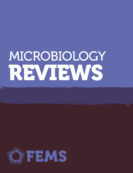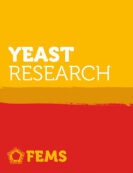FEMS Microbiology Letters Poster Prize: Chiara Borsetto & Luke Hillary
Molecular Microbial Ecology Group Meeting (MMEG) 2018
We are proud to announce the winners of the FEMS Microbiology Letters Poster Prize, awarded at the Molecular Microbial Ecology Group Meeting (MMEG) 2018 in Swansea, UK. The four judges felt that two posters and their presenters were outstanding and were keen to recognise both of them. As such MMEG2018 had two FEMS poster prizes awarded, which were presented to Chiara Borsetto and Luke Hillary by Dr Kevin Purdy, the FEMS editorial representative to the MMEG conference.

Chiara Borsetto‘s (@chiara_borsetto) poster was titled: Investigating environmental antibiotic resistance using flumes to mimic the river environment
Luke Hilary‘s (@lukehillary) poster was titled: Phages under foot: viromics detects long-term persistence of faecally associated viruses in biosolid amended soils
Read interviews with the prize winners below:
Chiara Borsetto
What is your current position, and what was your scientific journey to get there?
My passion as a microbiologist has always been related to the world of antibiotics. I firstly discovered my interest in both resistance and drug discovery during my Master degree at University of Insubria (Italy) looking at the link between resistance and production in the same microorganism.
My short stay at the John Innes Centre (UK) briefly after my Master degree enhanced my passion to learn more about antibiotic production which I then followed on during my PhD at University of Warwick (UK) where I also encountered the environmental aspect of this field of research.
I am currently a Postdoctoral researcher at the University of Warwick working on a NERC funded project in collaboration with the Centre for Ecology and Hydrology and University of Exeter focusing on AMR in the riverine environment and the selective pressure posed by low concentration of antibiotics on the spreading of AMR genes.”
Could you describe the research your poster covered?
The impact of low concentration of a sulfonamide antibiotic on the riverine indigenous microbial community in term of AMR genes enrichment and community composition changes. The experiment was conducted using flumes system which mimicked the river environment and allowed to monitor different parameters during the study. Further understanding on the effect of low concentration of antibiotics in the environment is needed to better estimate the risks and target mitigation policies.
What do you hope to focus your research on in the future?
In the future I hope to continue working in the antibiotic discovery and resistance fields as there is still a lot to be done to find solutions to fight antimicrobial resistance.
Luke Hilary
What is your current position, and what was your scientific journey to get there?
I am a post-graduate researcher at Bangor University and part of the STARS soil science PhD CDT programme. My research focuses on understanding how adding sewage sludge to agricultural soil affects the soil viral community and to what degree viruses of humans can persist in soils.
I started out as an undergraduate at the University of Sheffield studying Biochemistry and Microbiology, specialising in structural biology. I then spent two years as a post-graduate researcher looking at protein-protein interactions at the University of York, before teaching Chemistry in secondary schools around York for 6 years.
After feeling the call of research again, I decided to return to microbiology in the role I am in now. I was a little anxious about coming back to academia but it’s surprisingly common to have an indirect career path.”
Could you describe the research your poster covered?
The poster presents the preliminary results from the first chapter of my thesis, examining the long-term (> 20 years) effects of repeated sewage sludge addition on the soil viral community. I’ve been able to show that amendment with sewage sludge increases the proportion of sludge-associated viruses in the soil viral community but this decreases once sludge addition stops.
The next steps will be to delve into which viruses are present and whether their genomes show any interesting accessory genes, such as those coding for antibiotic resistance, or heavy metal tolerance. I wouldn’t have been able to do this kind of investigation without collaborating with others at Bangor and Liverpool or Rothamsted Research.
The long-term experiments there are a really valuable resource that allow researchers to look at the effects of human activity on micro-organisms and their viruses over much longer periods of time under controlled conditions.”
What do you hope to focus your research on in the future?
The level of viral diversity is amazing and soil viral ecology is a surprisingly underexplored area. We know very little about the role of viruses in soil microbial communities, relative to what we know about the oceans and human microbiome. I hope to continue exploring how viruses interact with their microbial hosts in terrestrial environments.
I am also interested in pathogenesis, public health and the techniques used to study the roles that viruses play in these areas. You never know where the next Ebola may be coming from so understanding environmental virology is a really important area of research that I look forward to being involved in the future!”
All but one of the FEMS journals are now fully open access (OA), with one journal, FEMS Microbiology Letters remaining a subscription journal with free-to-publish and OA options. Open access is key to supporting the FEMS mission of disseminating high quality research as widely as possible: when high quality, peer reviewed sound science is open access, anyone, anywhere in the world with an internet connection, can read it.







